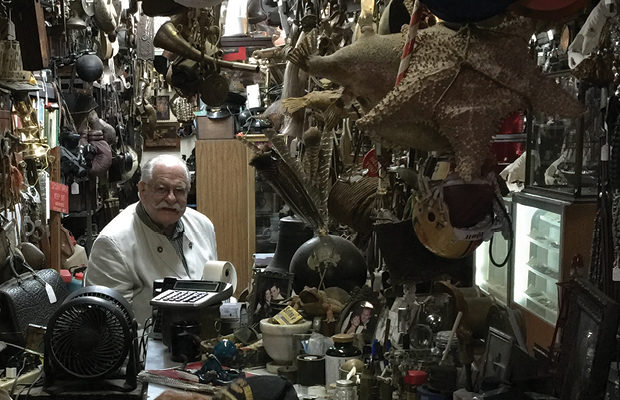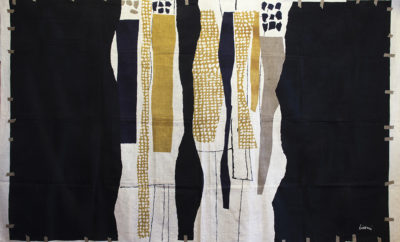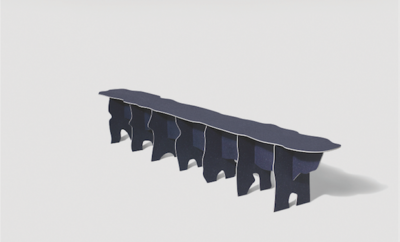 MITCHELL WOLFSON JR. AT STONE AGE ANTIQUES IN A PHOTO BY LEA NICKLESS/COURTESY WOLFSONIAN-FIU
MITCHELL WOLFSON JR. AT STONE AGE ANTIQUES IN A PHOTO BY LEA NICKLESS/COURTESY WOLFSONIAN-FIU
Feature
FROM THE EDITOR: From Here to Ephemera
IN ANOTHER ERA, I might have been one of those proverbial little old ladies in tennis shoes who marched in front of bulldozers to try to stop the demolition of historic buildings. But I’m of a slightly later generation, which means that the keyboard is my weapon, words more than deeds. I’ve been thinking hard about the various ways we protect our important cultural, architectural, and historic resources lately. Really, to confess, I’ve been obsessing over it.
As we weep over the savage and horrific destruction of world heritage sites in Syria and Iraq and so many other places around the world, we need only look out the window (many windows in many cities, towns, and countries) to see senseless wiping out of history. You can attribute it to greed or ignorance or insensitivity (this summer I saw a goofy painted sign that read “Am I stupid or apathetic? I don’t know, and I don’t care”) or all three.
I’ve wailed and railed as long and as loud as most of my preservationist friends about the assault on so many of our desirable older neighborhoods—from L.A. to Miami Beach to the West Village. But in reading Susan Morgan’s feature on the slide archives of Dr. Fred Block, I was struck by the way we almost lost a valuable record of California architecture and design in the middle of the last century (spoiler alert: among other things, the Museum of Modern Art had thrown away its slides of mid-century modern architecture). I thought of the times that entire collections from unknown photographers have been discovered in the trash, and not just photos, but architects’ plans, drawings, sketches for cities, parks, buildings, furniture, and more. It was not a nostalgic moment, but it reaffirmed my belief that we cannot limit our thinking about preservation.
My thinking on this subject crystallized more when I toured the Wolfsonian-FIU’s new exhibition that looks at the roots of Dutch modernism. It is a heady and intellectual show that, interestingly, was curated largely from the museum’s own vast collection of furniture, decorative arts, books, and paper. By paper I mean letters, brochures, pamphlets, posters, architectural plans, design drawings, and so much more. I’ve known Mitchell Wolfson Jr. (pictured above, the founder of the museum and whose collection is at the core of it) for a very long time and even have gone “shopping” with him in some pretty out-of-the-way places, and each time the experience was fascinating because he would find something interesting or important, even hidden in stacks of yellow paper. Others thought his collecting habits quirky (stuff instead of art and lots of polemical material documenting the rise of authoritarian movements in Europe or the Depression-era workers’ movements in America). But in time it’s become clear that he was heroically building a record of the modern era, and he was documenting it in both three dimensions—including parts of buildings or whole small ones, furniture and decorative objects, and even more mundane things such as appliances and tableware—and in two dimensions, meaning all that paper. Stuff.
My inbox always seems to have an email from someone wanting to teach me how to deal with paper clutter (and believe me, there is paper clutter), but I wonder. Scholars, curators, and writers who deal with material culture (a term that in my mind embraces the architecture of airports and the forging of a teaspoon, alike) need to touch and see it all. This isn’t to detract from the many important efforts at archives, libraries, and museums to digitize their collections, but in the end, there’s no substitute for the thing, the real thing. And I do wonder where we’d be if we didn’t have at least some of that stuff.













